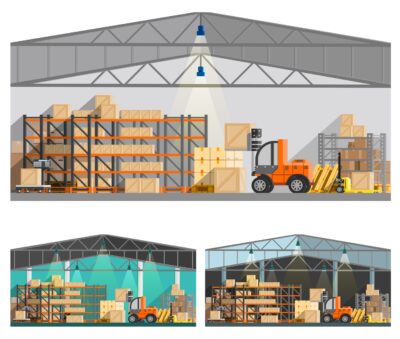When you think of innovation on the construction site, it’s usually the big-ticket items that come to mind: advanced cranes, modular builds, smart helmets. But behind the concrete and steel, the industry is quietly being reshaped by less glamorous—yet incredibly practical—materials and surplus supplies.
Today’s most efficient contractors aren’t just good with bricks and blueprints; they’re masters of logistics, material sourcing, and squeezing more out of their margins. And often, the edge comes from places you wouldn’t expect—like plastic pallets and industrial surplus parts.
Here’s a look at five unexpected materials and practices driving smarter, leaner construction operations in 2025.
1. Plastic Pallets: The Unsung Hero of Site Logistics
Wooden pallets have been the standard on job sites for decades. But as sustainability targets tighten and efficiency becomes king, more contractors are turning to plastic pallets—and for good reason. Unlike their wooden counterparts, plastic pallets are reusable, weather-resistant, and splinter-free (your boots and hands will thank you). They don’t absorb moisture or chemicals, which is a huge win when you’re transporting heavy materials or storing gear outdoors. Plus, they’re lighter, stack better, and reduce transport costs over time.
Many construction firms now partner with logistics suppliers who offer rentable plastic pallets, integrating them into just-in-time delivery systems for bricks, tiles, piping, and even prefabricated components.
Pro tip: Look for pallets made from recycled plastics to tick your sustainability boxes and cut landfill waste. You might even score better pricing from suppliers aiming to meet their own green targets.
2. Industrial Surplus Parts: The Smart Buy No One Talks About
Supply chain delays and rising costs have pushed construction managers to rethink sourcing strategies. One surprisingly effective approach? Tapping into the industrial surplus market.
Think of it as the treasure hunt of procurement. Industrial surplus parts—everything from electric motors and HVAC units to circuit breakers and piping can often be found brand new or lightly used at a fraction of the retail cost. Warehouses and liquidators regularly offload surplus inventory due to overorders, discontinued projects, or simple overstocking.
By sourcing certain non-structural or MEP (Mechanical, Electrical, Plumbing) components this way, you can shave thousands off project costs without compromising safety or quality.
Just be sure to:
- Verify part specifications and certifications
- Purchase from reputable surplus dealers with return policies
- Maintain documentation for warranty and compliance
With the right checks in place, industrial surplus isn’t cutting corners; it’s cutting waste.
3. Modular Storage Containers: From Shipping to Site Office
Repurposed shipping containers are becoming the Swiss Army knife of the construction world. Need a secure storage space? Check. Temporary site office? Check. Tool station or mobile workshop? Also check.
Better yet, many of these containers are refurbished using surplus industrial materials, insulation panels, HVAC units, and shelving that would otherwise sit in warehouses
gathering dust. By blending modular design with surplus sourcing, site managers are solving space problems quickly and affordably.
And with rising site theft risks, a reinforced container with proper locks and lighting can offer more peace of mind than a rickety old shed.
4. Eco-Friendly Aggregates: Waste That Works
Construction and demolition generate over a third of the world’s total waste. But there’s a silver lining: many of these byproducts are being reincarnated as eco-aggregates for concrete and fill.
Crushed concrete, glass, and even plastic waste are now used in roadbeds, drainage layers, and non-structural slabs. They’re cheaper, environmentally friendly, and often lighter, helping to reduce transportation fuel costs.
Some innovative suppliers even package recycled aggregate on—you guessed it—plastic pallets, reducing wood waste in the delivery chain and creating a closed-loop logistics system.
5. Offsite Fabrication & the New Age of Just-in-Time
Last but not least, the rise of off-site fabrication has completely changed how materials move to and around the job site.
Rather than delivering hundreds of individual parts and tools, many contractors now receive pre-assembled kits—from steel frames to bathroom pods—on standardized pallets or modular racks. This reduces onsite chaos, slashes labor costs, and boosts quality control.
What’s key here is coordination. Your suppliers must be in sync with your build schedule, and often that means managing inventory smarter. This is where those plastic pallets come full circle—they help standardize transport, reduce return friction, and ensure reusable logistics across multiple projects.
The Bottom Line: Waste Less, Build Better
In an industry that still battles delays, cost overruns, and supply headaches, the smart money is on efficiency and resourcefulness.
Whether it’s swapping out splintering wooden pallets for long-life plastic ones, sourcing surplus HVAC gear at a third of the price, or rethinking your site layout with modular storage—these small shifts add up.
Construction isn’t just about bricks and labor anymore. It’s about systems, supply chains, and sustainability.
So next time you’re bidding on a project, don’t just ask what you’re building—ask how you can build it smarter.
And if that means rolling in your prefab kitchen pods on recycled plastic pallets and wiring them up with surplus switches from a warehouse liquidation sale… well, that’s not cutting corners.
That’s cutting through the noise.
View the original article and our Inspiration here


Leave a Reply